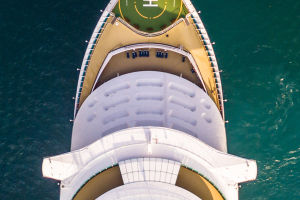As a means of transport, compared with other means of transport, cargo ships have the advantages of large carrying capacity and low operating costs. Cargo ships come in many shapes and sizes, with displacements ranging from hundreds of tons to hundreds of thousands of tons.
Classification of cargo ships.
Dry cargo ship.
Cargo ships that mainly carry dry cargo, but also liquid cargoes in barrels. Including general cargo ships, bulk carriers, multi-purpose ships three categories.
Bulk carriers are specially designed to transport bulk cargoes such as grains, ore, and coal.
Liquid ship.
Generic term for cargo ships used to transport bulk liquid cargoes. It can transport chemical liquids and liquefied gases such as petroleum, water, vegetable oil, and ammonia.
Mainly include crude oil tanker, product oil tanker, liquid chemical tanker, liquefied petroleum gas tanker, liquefied natural gas tanker, etc.
Reefer ship.
Cargo ships carrying fresh vegetables and perishable goods. Most of them operate in the form of regular liner, and the speed can reach 20 to 22 kilometers per hour.
In order to prevent the transported goods from being crushed, multi-layer decks are often set up, which have good heat resistance and moisturizing functions. According to the different forms of refrigeration, reefer ships are divided into reefer cabin ships and reefer container ships.
Container Ship.
In order to improve transport efficiency, cargo ships specially developed for transporting containers.
The hull is thin, single-layer continuous deck, stern type, high power, fast speed, high stability requirements; large cargo hold opening, standardized size, and large average tonnage.
In order to ensure the safety of transport ships in operation, various shipping countries have formulated various laws and regulations.
During the shipping process of container ships, relevant international regulations and other relevant regulations and requirements should be strictly observed. Let's take a look at what needs to be paid attention to during the transportation of container ships?
Precautions before loading and unloading.
Before packing.
The ship should follow the established container securing plan. Organize and arrange sufficient securing riggings with good technical conditions.
Check whether the cargo hold bilge well and its drainage system, cargo hold ventilation system, cargo hold rails, cargo hold hatch covers, deck securing orders, and the whole ship's ballast water system are in proper condition.
Before unpacking.
The shipowner should introduce the securing situation of the container to be unloaded in detail to the unloading party, so that the stevedore can quickly loosen the container securing rigging according to the unloading sequence.
Precautions during transportation.
During the voyage, in case of strong wind and wave warning, attention should be paid to check and increase the securing equipment of the container.
When the deck container securing rigging is loose or broken, timely remedial measures should be taken according to the current situation to prevent the container from being thrown into the sea.
For any abnormal phenomenon of the goods in the container, the cause should be identified as soon as possible, and measures should be taken to avoid affecting other containers as much as possible.
Cargo ships have the benefits of cargo ships.


